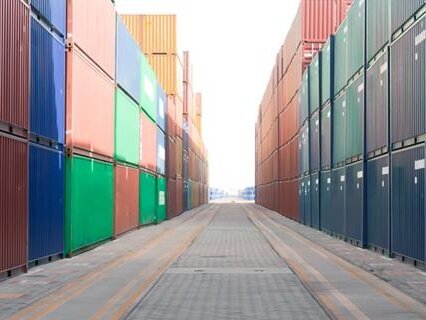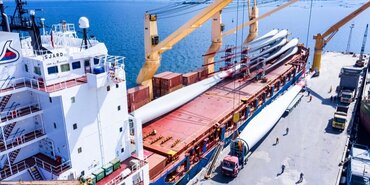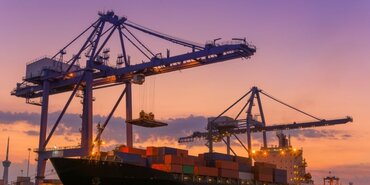TT Talk - Safety Alert - Serious Injury from Sudden Depressurisation of Lift Truck Tyres

The Club has been alerted to a serious accident where a fitter was removing wheels from a lift truck to carry out planned maintenance work. One wheel flew off as the pneumatic tyre suddenly and unexpectedly depressurised. The wheel struck the fitter and caused serious injuries.
TT Talk Edition 115 - 27 Jan 2009
highlighted this type of incident involving split wheel rims, providing advice based on an information paper by ICHCA International. The main elements of that advice are repeated here, urging increased vigilance.
Modern cargo handling terminals are equipped with mobile lifting and carrying machines. One of features of these is the use of large pneumatic tyres requiring high internal pressures. Most such tyres have split rim wheel assemblies and inflating and/or changing them can be extremely hazardous if not carried out properly. These hazards and the ways to avoid them have been known for a long time but they still continue to be a source of injury, which in most instances prove to be fatal.
Such assemblies can come apart due to a variety of reasons including:
- Damaged or mismatched rim parts
- Corroded or dirty rim parts
- Failure to deflate tyre before removal
- Incorrect tyre size
- Over inflating tyres
- Fitting tubed tyres on a rim designed for tubeless tyres
- Removing the nut which holds the wheel rim together (on some designs of split rim)
Whilst workshops provide a frame behind which a tyre can be placed whilst it is worked on (and this should always be used), this is not possible if work is necessary on the terminal itself and the main circumstance and site of fatal accidents is in the latter situation. It must be emphasised that to avoid such accidents, if a cage or frame cannot be used to give the worker protection, the tyre must be deflated before it is removed. Similarly, tyres should not be inflated prior to correct fitting. Manufacturers' recommendations on the safe removal and replacement of tyres and or rims must be incorporated into a safe system of work. Those who are employed to carry out such tasks should receive suitable and proper training on the correct procedures. Supervision is needed to ensure that these procedures are correctly followed.
Recent advice from the UK Health & Safety Executive may also assist:
http://www.hse.gov.uk/pubns/indg433.pdf
It is recommended that operators of this type of equipment review their procedures and ensure through instruction, supervision and training that safe arrangements are in place and followed.
- Author
- Staff Author
- Date
- 23/06/2010





